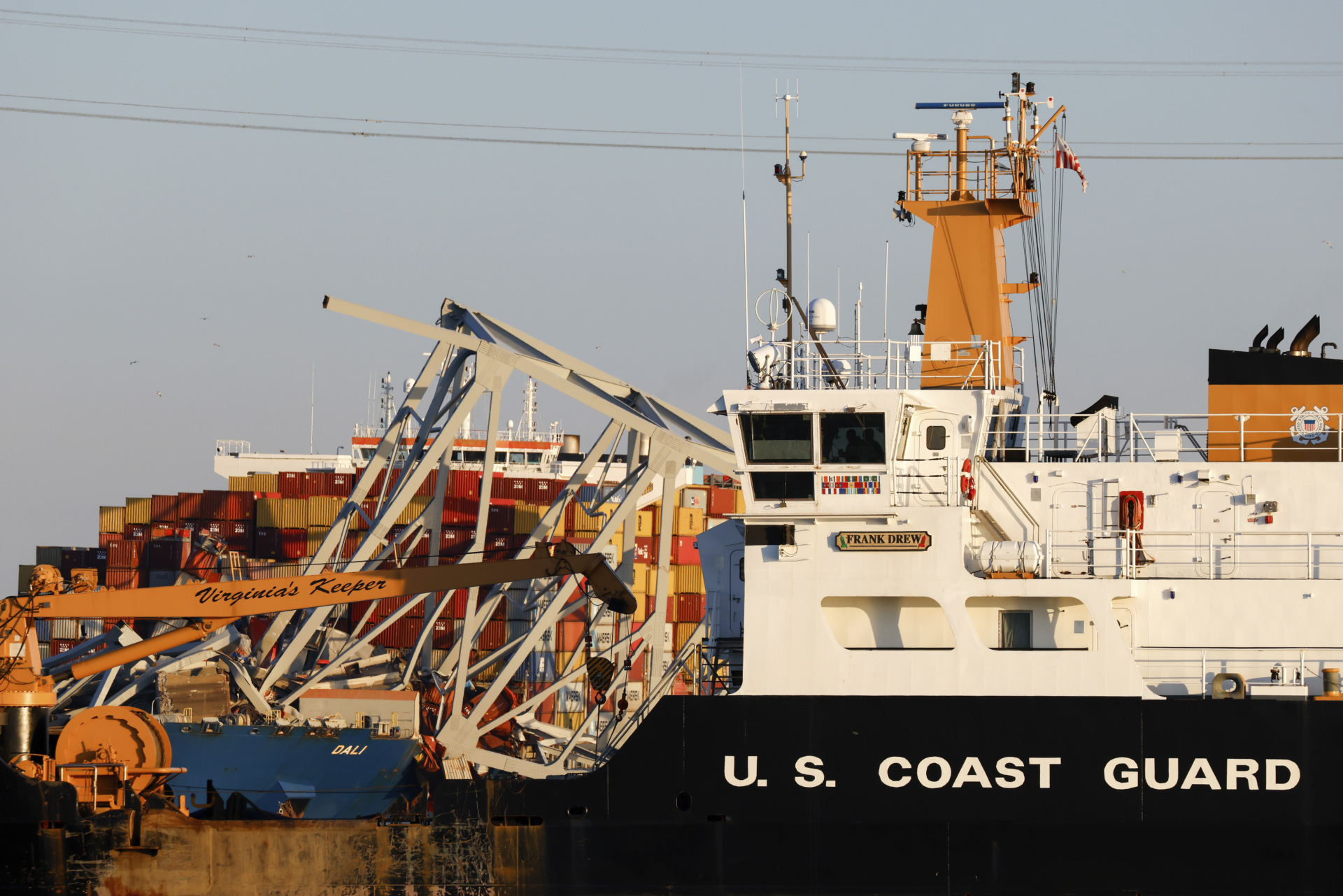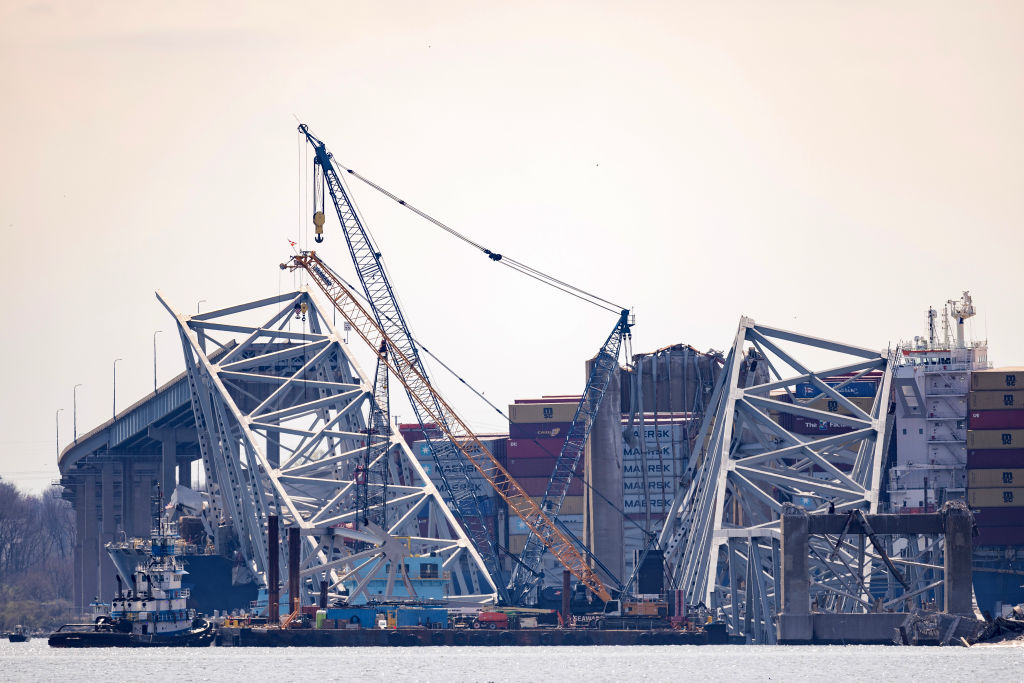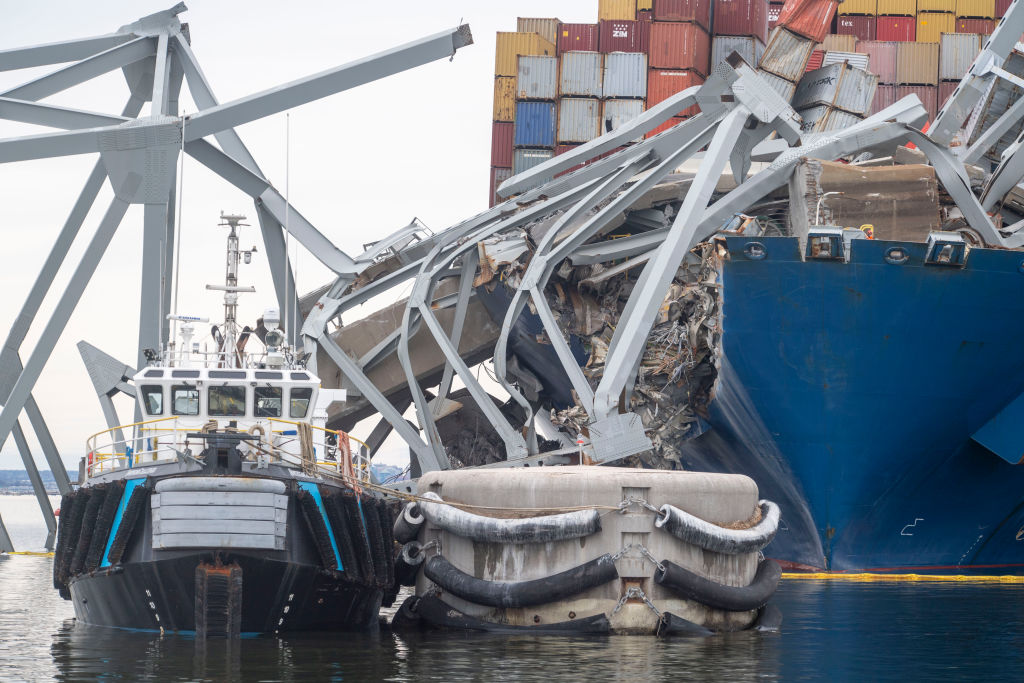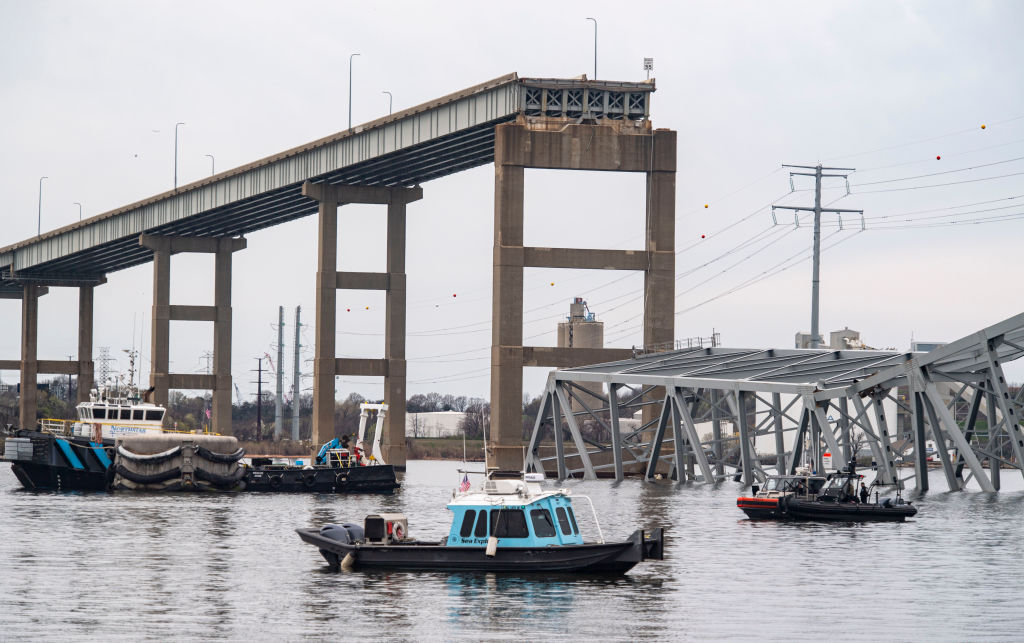2024-04-01 04:44:13
Work crews have commenced the urgent work to remove the collapsed structure of the bridge over the Patapsco River, cutting through the enormous steel girders to load parts onto waiting barges.
Large barge-mounted cranes arrived in Baltimore at the end of last week to support the effort to clear the deep-dredged central channel of the Patapsco River, and now cascades of sparks herald the work of cutting the remains of the former bridge into manageable pieces for recycling. Workers suspended in cages used gas torches or cut through the Francis Scott Key Bridge’s steel, supported by seven cranes including cranes capable of lifting up to 1,000 and a 500 tons, reports WorldCargo News.
A statement said: “Highly trained demolition crews are cutting the top portion of the north side of the collapsed bridge truss. Two crane barges, a 650-ton crane and a 330-ton crane, are actively working on scene. The removed wreckage is scheduled to be lifted and transferred to a barge this evening as daylight allows. A 230-ton land-based crane will offload and process the wreckage at Tradepoint Atlantic and will then be taken to a disposal site.”

A Coast Guard coastal buoy tender passes by as wreckage of the Francis Scott Key Bridge rests on the container ship Dali, Saturday, March 30, 2024, in Baltimore. (AP Photo/Julia Nikhinson)

BALTIMORE, MARYLAND – MARCH 31: Debris is cleared from the collapsed Francis Scott Key Bridge as efforts begin to reopen the Port of Baltimore on March 31, 2024, in Baltimore, Maryland. The bridge, which was used by roughly 30,000 vehicles each day, fell into the Patapsco River after being struck by the Dali, a cargo ship leaving the port at around 1:30am on Tuesday morning. The bodies of two men who were on the bridge at the time of the accident have been recovered from the water; four others are still missing and presumed dead; two others were rescued and treated for injuries shortly after the accident. The Port of Baltimore is one of the largest and busiest ports on the East Coast of the U.S. (Photo by Tasos Katopodis/Getty Images)
While the timeline to completely reopen the port of Baltimore and even replace the bridge is unclear and may stretch to the months and years respectively, the present priority appears to be to get the northern part of the dredged channel furthest from the presently position of the MV Davi clear of wreckage to allow some ships to pass in and out of the harbour, As well as working ships to help support the salvage process, that may also include urgent commercial shipping, but the channel will only operate one-way, meaning the flow of traffic will be slow.
The salvage operation is complex. Parts of the bridge rest on the bow of the MV Davi, the large container ship which struck the bridge’s central span southern pier, causing a cascade failure that brought the whole structure down. The ship has suffered damage beneath the waterline and has some flooded compartment forward, but it remains buoyant. If the removal of those bridge sections pinning the ship to the riverbed aren’t removed with care the ship could float free or pivot in an uncontrolled fashion, a concern given there are underwater gas and power lines close to hand, and overhead cable towers close by.
Working to keep that situation under control beyond the mammoth cranes are several tugs and coastguard ships at the scene.

BALTIMORE, MD -MARCH 31: Workers start to clear the channel of the twisted metal and concrete of the Francis Scott Key Bridge, as authorities turn their focus to “salvage” operations with heavy duty cranes to remove wreckage from the Patapsco River after the massive container ship, Dali, caused the bridge to collapse on March 31, 2024. (Photo by Jonathan Newton/for The Washington Post via Getty Images)

BALTIMORE, MD -MARCH 31: Workers start to clear the channel of the twisted metal and concrete of the Francis Scott Key Bridge, as authorities turn their focus to “salvage” operations with heavy duty cranes to remove wreckage from the Patapsco River after the massive container ship, Dali, caused the bridge to collapse on March 31, 2024. (Photo by Jonathan Newton/for The Washington Post via Getty Images)
Breitbart News has reported that early claims on how quickly and how cheaply the Baltimore bridge could be repaired appear to have been extremely optimistic. Economics editor John Carney has stated:
The job of rebuilding the collapsed Francis Scott Key Bridge in Baltimore is going to take a lot longer than many people initially thought—and cost a lot more money. The Associated Press reported Friday that rebuilding the bridge could take “anywhere from 18 months to several years,” according to experts. It pinned the price tag at $400 million “or more than twice that.”
If anything, those are lowball estimates. The original bridge took five years to build from groundbreaking to ribbon-cutting. But the planning for the bridge began years before that. It cost $141 million back in the 1970s, the equivalent of $735 million today.
Simply adjusting the 1970s construction costs for inflation, however, does not capture the picture of how much more expensive major infrastructure projects are today than they were 50 years ago. A 2019 Brookings Institution study of costs to build interstate highways found that states spent approximately three times as much to construct a highway mile in the 1980s as they did in the early 1960s. The study stops then because major infrastructure construction has almost ground to a halt since then.






